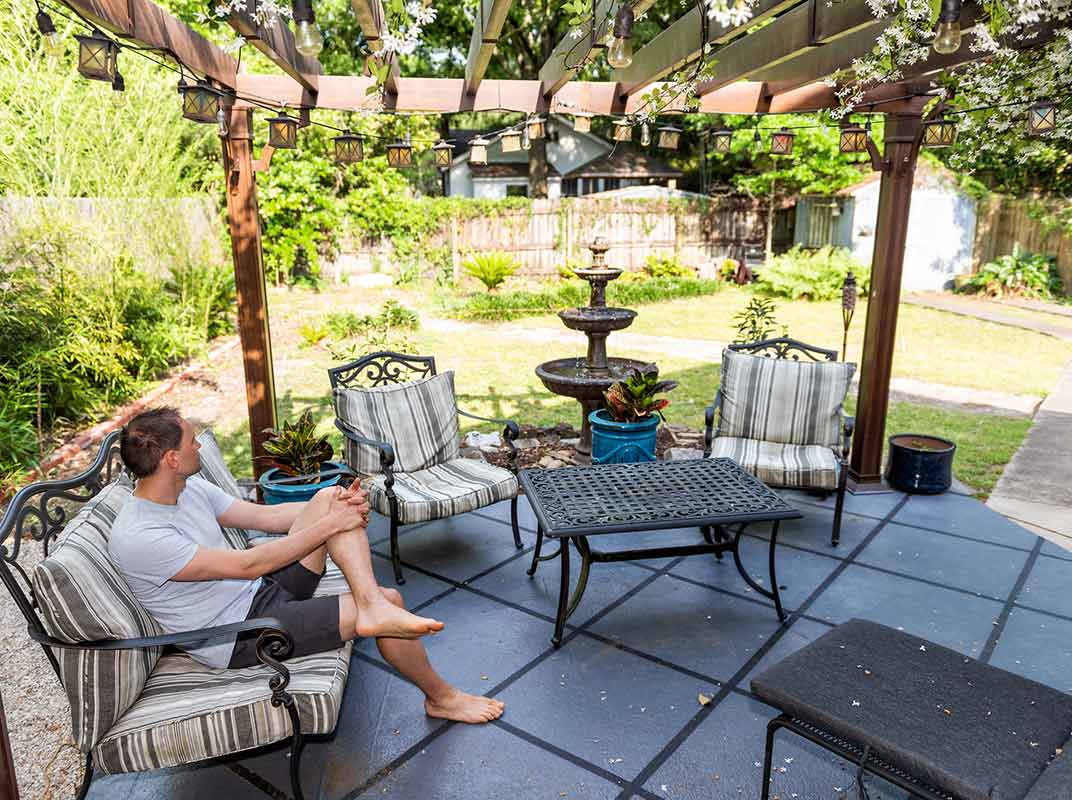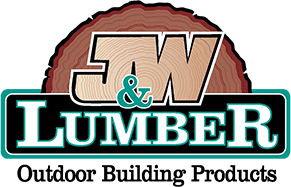
The dog days of summer are in full swing which means plenty of opportunities for family get-togethers and weekend BBQs. However, when temperatures go up, providing shade in the backyard is a priority. A wood patio cover or pergola is an excellent way to offer protection from the sun and make an outdoor space more inviting… but is there a difference between these two structures?
The shade structures you see in most backyards can be part of the house over a concrete patio (attached) or standing on their own away from the home (freestanding). There are several customizations to each of these DIY projects to create a comfortable backyard ambiance. But what is this shade structure called? Is it a patio cover, a pergola, or maybe a trellis?
The short answer is both the term “patio cover” and “pergola” can be used interchangeably. We hear both terms used by homeowners, contractors, and even our own team members at J&W Lumber, all the while referring to the same beautiful backyard shade structure. Whereas, a trellis is much lighter and smaller in design and typically constructed using only two posts. These outdoor additions are primarily used in gardens to support plants, while also adding an element of style.
So let’s explore why installing a patio cover or pergola is beneficial in the first place.
Why build a pergola or patio cover?
Pergolas and patio covers are designed to block direct sunlight both overhead and through windows, possibly saving money on air-conditioning, and encouraging more time spent outdoors. You can determine your ideal balance of sun and shade based on the width of the lattice top boards, or opt for a solid roof for maximum coverage.
They can be designed using different types of woods like Western Red Cedar, Redwood, or Douglas Fir with various options for staining or painting. Heavy timber offers a rustic look, while link brackets deliver a modern appeal. Or they can be installed using long-lasting attractive aluminum. Each of these details adds to the overall aesthetic and can be tailored to fit the style of your home.
For further customization, there are complementary cooling options, such as pulldown screens, canopy-style openings, growing vines across the top for natural coverage, and fan installation, if the design calls for it. From lattice top pergolas to solid roof patio covers, the structure serves both a functional and decorative purpose and a variety of ways to make it your own.
How to install a wood patio cover
From a DIY standpoint, a lattice top patio cover attached to the house slightly edges out the solid roof freestanding patio cover option in terms of installation ease, only because a freestanding pergola requires creating new footings in the yard and a solid roof has additional installation steps. This takes extra labor, largely due to the hard ground in Southern California. However, even if you’re brand new to the building experience, building either outdoor shade structure can be achieved in a weekend, especially if you have a helping hand to make it go faster.
Additionally, J&W Lumber makes installation even easier by offering pre-cut wood patio cover kits with all the necessary hardware, essentially making the build a plug-and-play process. Once you’ve decided on the design, we’ll provide a printout of the materials. Remember every city may have its own rules and setback requirements that you’ll want to check before you build. We’ll help you get what you need to get started.
Shade coverage to suit your needs
By now it’s probably clear that when determining the difference between a pergola or patio cover, there really isn’t one. It mainly comes down to a preference of terminology. No matter what you call it or the customization you have in mind, our specialists are here to assist you. Stop by your nearest J&W Lumber location today.
